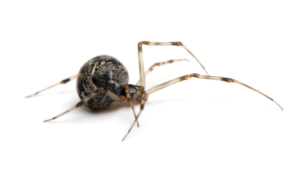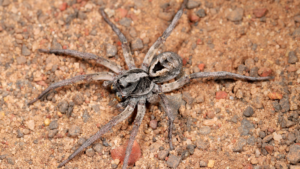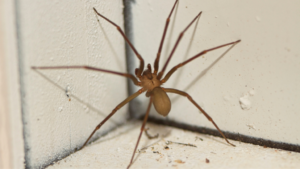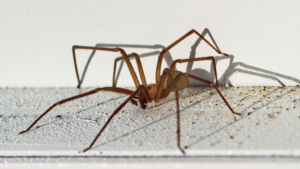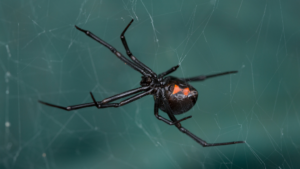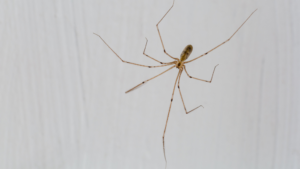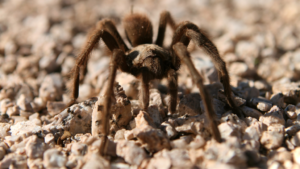Spiders in Arizona
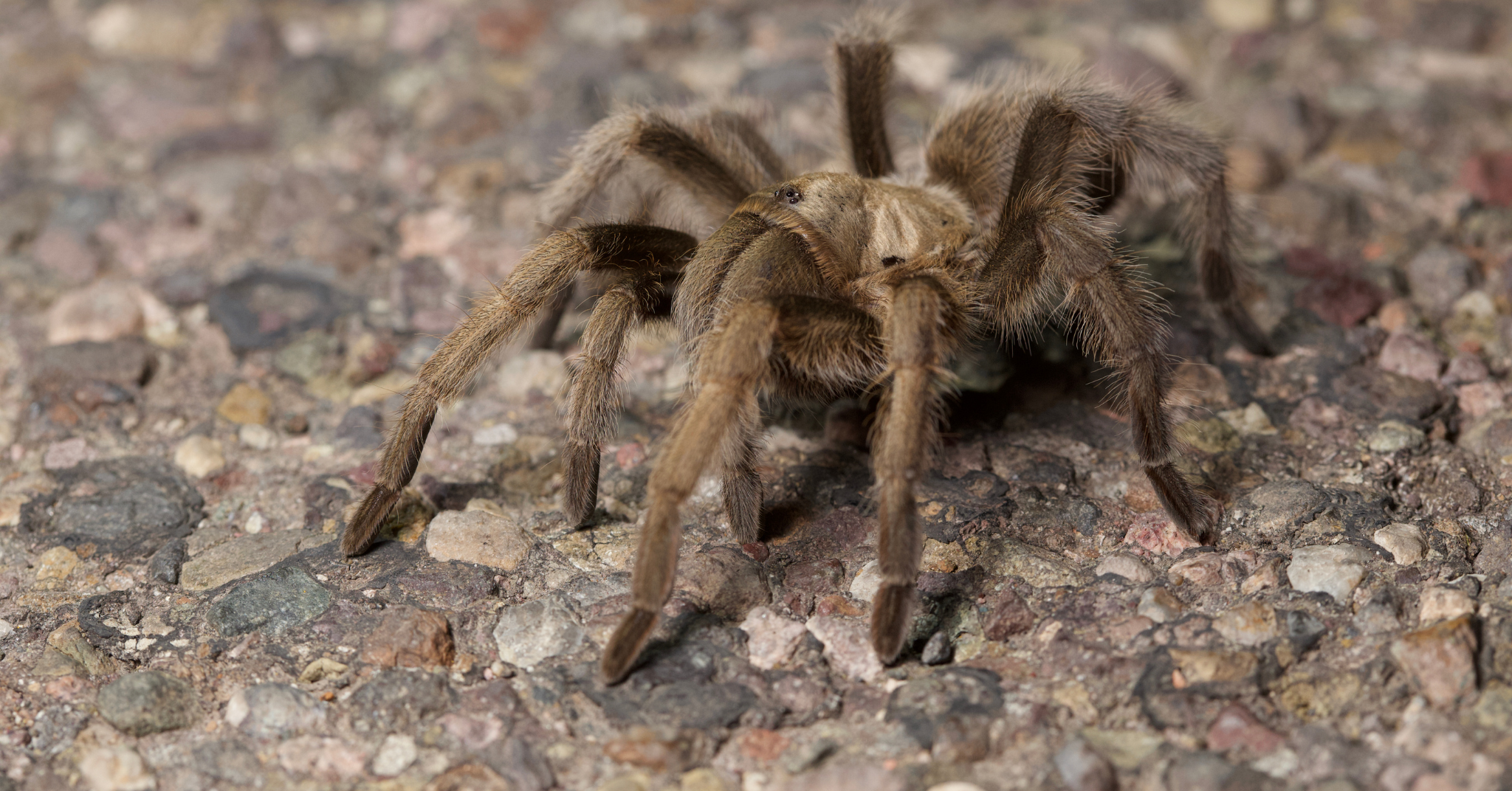
How to Kick Spiders Out of Your Arizona Home
This guide will help you identify Arizona-dwelling spider species and prevent them from entering your home. We know that finding these eight-legged critters can be a troublesome, even distressing, experience.
Spiders are common household pests in Arizona, and while they’re important to ecosystems in the American southwest by preying on insects and balancing out populations of mosquitoes, flies, cockroaches, and other pests, that doesn’t mean you want these unpleasant arachnids in your home.
There are more than 49,000 spider species worldwide and an estimated 4,000 in North America. While many spiders are harmless, some can be dangerous to humans. Keeping spiders out of your house can keep you and your family protected from potentially dangerous spiders and bring you peace of mind.
What Do Spiders Look Like?
Let’s start with the basics. As a group, spiders are fairly easy to identify. They have eight legs with retractable claws on each foot and between six and eight eyes, depending on the species. Many of these wingless animals spin elaborate webs which they use to trap the insects they rely on for food.
Spiders aren’t actually insects—they’re arachnids, making them close relatives of ticks and scorpions. They feed on many of the insects we consider pests, such as mosquitoes, flies, aphids, cockroaches, and moths. Some even eat lizards and frogs.
Explore Black Spiders in Arizona:
- Black Widow: Recognizable by its glossy black body and distinctive red hourglass marking, the black widow is one of the most well-known black spiders.
- Arizona Black Hole Spider (Kukulcania Arizonica): A black spider native to Arizona, known for its burrowing behavior.
- Bold Jumping Spider: Notable for its compact, black body and impressive jumping abilities.
- Wolf Spider: A large, agile hunter with a dark, often blackish appearance.
- Garden Spider: Typically black with yellow markings, known for its intricate web patterns.
- Crab Spider: Often dark in color, this spider is named for its crab-like stance.
Are Spiders Dangerous?
While many spiders are harmless, some can be dangerous to humans. These include brown recluse spiders, Arizona recluse spiders, and black widow spiders. Their bites can cause severe reactions such as necrosis, pain, and difficulty breathing. If you’re ever concerned about a spider bite, it’s best to seek immediate medical attention.
Common Spiders in Arizona
Common House Spider (Parasteatoda tepidariorum)
Common house spiders, as their name suggests, are abundant in Arizona and throughout the United States. This spider has a yellow, sometimes brown, body with banded yellow to brown legs. Common house spiders are abundant year-round and often build their webs in the spaces between eaves and walls and in window frames. Their webs often lead to cobweb build-up in houses, barns, and sheds. Common house spiders aren’t usually dangerous to humans.
Wolf Spider (Hogna carolinensis)
Wolf spiders are among the largest of the wolf spiders common in North America. They are found throughout Arizona and have dark brown bodies that are covered in scattered gray hairs. Like other wolf spiders, they are hunting spiders, meaning they do not spin webs to catch their prey. Instead, wolf spiders hunt on the ground, running down their food with a speed that startles the humans who encounter them. These spiders live in holes or tunnels that they build in soil and often dwell under old boards, stones, and firewood. They hunt ants, grasshoppers, crickets, and other spiders, even taking down the odd lizard or frog when the opportunity presents itself. Wolf spider bites aren’t typically serious, and most symptoms subside after 24 hours.
Brown Recluse Spider (Loxosceles reclusa)
Brown recluse spiders are non-aggressive, shy, six-eyed spiders common in the American southwest. They range from tan to gray in color and have long, slender legs. Brown recluse spiders feed on crickets and cockroaches and are sometimes called violin spiders because of the unusual, violin-shaped marking they have on their back. This spider tends to dwell in areas that are rarely disturbed, including cluttered closets, garages, crawl spaces, and attics. People most often spot brown recluse spiders during spring. While brown recluse spiders don’t usually attack humans, they can inflict a dangerous bite when provoked. A brown recluse bite can kill skin tissue, causing skin necrosis in severe cases. Seek medical attention in the event of a brown recluse spider bite.
Arizona Recluse Spider (Loxosceles arizonica)
Arizona recluse spiders, or Arizona brown spiders, are venomous spiders that are nearly indistinguishable from the brown recluse. Like brown recluse spiders, they have three pairs of two eyes, thin legs and an unusual, violin-shaped marking on their back. Arizona recluse spiders are abundant in southern Arizona and range from tan to brown in color. Outdoors, these spiders live under old pieces of wood and dead cacti and can hitch a ride into homes aboard firewood or dead cacti skeletons.
Widow Spiders (Latrodectus)
Widow spiders are a group of venomous spiders, of which several species are common in the United States. Their ideal habitat includes holes, cracks, crevices, trash, and clutter—all of which human structures like homes and barns offer. The poster child for this spider group is the western black widow spider (Latrodectus hesperus). Female western black widows are shiny and jet black with a distinct, hourglass-shaped red marking on their abdomen. Black widow spiders are more active at dusk. While they rarely bite humans, female black widows can produce a venomous neurotoxin that can cause intense pain and spread throughout the body. Bites are rarely fatal, but it’s a good idea to seek medical attention if you’ve been bitten.
Cellar spiders (Pholcus phalangioides)
Cellar spiders are a common pest in basements across Arizona. As their name suggests, people tend to find them in damp cellars, basements, warehouses, and crawl spaces. These pests vary in size, depending on the species, but have characteristically small bodies and long, thin legs—people often call them daddy longlegs. They range from tan to grayish-brown in color and produce large amounts of webbing. Unlike other spiders that consume their old nests, cellar spiders continuously add to old webs, making them a nuisance for homeowners to remove. Cellar spiders build their webs—which are haphazardly constructed and loose—in corners to catch their insect prey.
Tarantulas (Aphonopelma)
Tarantulas are among the largest and longest-lived spiders. Some people choose to keep them as pets. On average, adult tarantulas grow to about 5 inches long but can reach 11 inches in length with their legs spread out. These spiders are easily identifiable because they are covered in thick hair that varies from black to brown, red, or even blond in color, depending on the species. When threatened, a tarantula can launch stinging hairs at an attacker. These hairs are only somewhat irritating for humans but can kill small mammals. For insects, tarantulas use venom to paralyze their prey. Thankfully, this venom has little effect on humans, as it isn’t toxic enough to cause us any serious harm. Tarantulas are common to states within the American southwest, including Arizona. They tend to live in burrows in deserts or grassland. While they seldom infest homes, the odd tarantula can wander onto a property and give a homeowner quite a fright. Arizona is home to many tarantula species, including the Arizona blond tarantula, the Grand Canyon black tarantula, and Aphonopelma chiricahua, a species endemic to Arizona’s Chiricahua mountains.
How to Prevent (and Get Rid of) Spiders in Arizona
Seal Openings
Spiders can sneak in through very small openings. That’s why it’s important to seal up any cracks or gaps around window frames or doorways. You can do this yourself using caulk purchased from your local hardware store. Consider installing tight-fitting window screens and door sweeps to keep spiders out as well. It’s essential to replace any damaged barriers to ensure that spiders don’t make their way inside.
Clean Your Home and Get Rid of Clutter
Spiders tend to seek dark, enclosed spaces in which to harbor. That’s why tidying up can help uncover and remove the hiding places spiders gravitate toward. Check in, behind, and under rarely-moved fixtures in your home. Even rearranging storage boxes periodically can help disturb the area enough for spiders to seek another home. After sweeping and vacuuming, empty the debris outside to prevent any trapped spiders from crawling back out of the trash inside your home.
Manage the Vegetation and Landscape Around Your Home
Try to create space between shrubs and your home’s exterior to reduce spider harborage areas. Regularly cutting the grass can also help prevent large spider infestations. If you have firewood piles near the house, keep them at a safe distance from your foundation, windows, and doorways to prevent spiders from wandering inside.
Use a DIY Peppermint Spray Solution
Compounds in mint oil can repel some spider species. For an at-home repellant, add five drops of peppermint oil and a dash of dish soap to a 16-ounce spray bottle. Fill the rest with water, shake thoroughly, and spray the mixture outdoors. Target entry points, such as around windows and doors.
Address Insect Problems
Regular pest control is an important part of spider prevention. By preventing other insects from infesting your home, you’re cutting off the food source of the spiders that seek them out. Avoid attracting insects indoors by keeping your home clean, sealing food properly, and removing sources of stagnant water like mop buckets or oversaturated plant pots. Keep on top of trash removal and ensure that your garbage cans have tight-fitting, sealable lids that keep insects out. Exterior yellow light bulbs can also help reduce the amount of pests congregating around lights at night.
Call a Professional
If spiders have invaded your home and you need help getting rid of them, professional pest control can help. A professional can identify the infesting species and recommend a course of action to reduce and eliminate the problem.
Call Moxie Pest Control to Remove Spiders from Your Arizona Home Today
When it comes to spider removal in Arizona, Moxie Pest Control’s skilled field experts are among the best in the game. You can rest assured that with our experience and expertise, we can identify and carry out the best solution for tackling spider infestations in your home.
So if you’re tired of dealing with your spider problem, let us help. Call Moxie Pest Control to make your home feel like home again.

